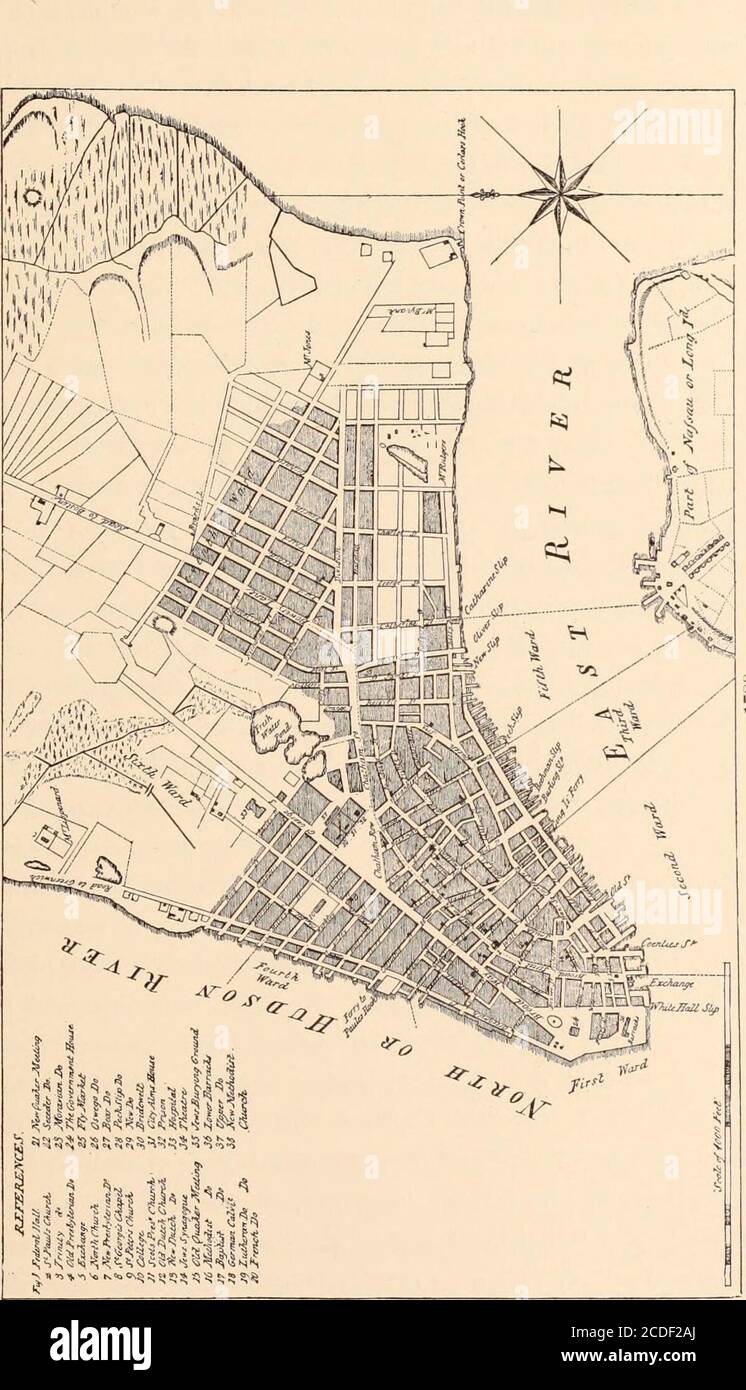. A history of real estate, building and architecture in New York City during the last quarter of a century . Kalch, Callech, CoUeck or Collect. By the Englishthe water was popularly known as the Fresh Water Pond. Thepond was surrounded by broad stretches of swampy ground, halfland and half water, which extended across the island, exceptingabout 150 yards of salt meadow on the North River and about 300yards of similar meadow on the East River. A sluggish stream alongthe line of the present Canal street furnished an outlet into the NorthRiver, while on the opposite side a similar stream, called

Image details
Contributor:
Reading Room 2020 / Alamy Stock PhotoImage ID:
2CDF2AJFile size:
7.2 MB (389.2 KB Compressed download)Releases:
Model - no | Property - noDo I need a release?Dimensions:
1198 x 2087 px | 20.3 x 35.3 cm | 8 x 13.9 inches | 150dpiMore information:
This image is a public domain image, which means either that copyright has expired in the image or the copyright holder has waived their copyright. Alamy charges you a fee for access to the high resolution copy of the image.
This image could have imperfections as it’s either historical or reportage.
. A history of real estate, building and architecture in New York City during the last quarter of a century . Kalch, Callech, CoUeck or Collect. By the Englishthe water was popularly known as the Fresh Water Pond. Thepond was surrounded by broad stretches of swampy ground, halfland and half water, which extended across the island, exceptingabout 150 yards of salt meadow on the North River and about 300yards of similar meadow on the East River. A sluggish stream alongthe line of the present Canal street furnished an outlet into the NorthRiver, while on the opposite side a similar stream, called WreckBrook, communicated with the East River at the foot of the pres-ent Roosevelt street; so that, at exceptionably high tide, the watersof the two rivers mingled in the Collect. By 1733 the stagnant pondhad become a menace to the public health. Consequentlv, in thatyear, it was granted to Captain Anthony Rutgers, who proposed toimprove its sanitary condition by a system of sluicing and dammingdevised by himself. This system no doubt had some efifect in carry- BUILDING AND ARCHITECTURE IN NEW YORK. 31. 32 A HISTORY OF REAL ESTATE, ing away the unhealthy stagnation. But with the multiplication ofdwelling and other houses around the Collect the sense of dangerto the public from its polluted waters increased, and in 1791 the citypurchased Captain Rutgerss heirs interest in it for £150. The fillingin of the pond was apparently begun in 1803. when the dirt exca-vated on the site of the City Hall in City flail Park was dumpedinto it. I hit it was not until 1808 that the work was undertaken inearnest. The city Ijcing then full of sailors and laborers thrown outof employment by the Embargo act, the city government, to relievethe distress among this element of the population, engaged a largeforce of men to obliterate the pond by leveling into it the surround-ing hills. Two years later the improvement was completed. The filling in of the Collect was by no means an isolated instance of